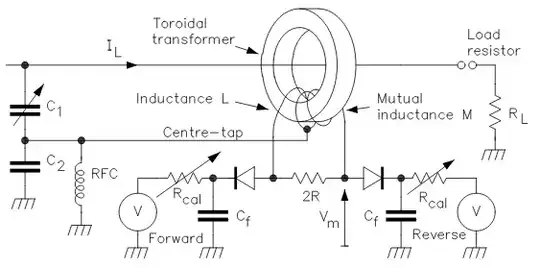I have updated this question to make it simpler because i haven't seen an acceptable answer yet.
New Question.
The impedance seen at any point on a transmission line is E/R. If the SWR isn't 1:1 then the impedance changes along the length of the line. Does the departure away from 50 +j0 ohms of the impedance on the transmission line caused by the SWR not being 1:1 affect the accuracy of a SWR meter which is designed to work at 50 + j0 ohms ?
A swr meter is designed to work with a specific impedance transmission line, that usually being 50 ohms. The meter is calibrated to be correct for 50 ohms and it won't read correctly if the transmission line impedance isn't 50 ohms and won't read anything if there's no RF current flowing along the transmission line. And a 50 ohm transmission line has a characteristic impedance of 50 ohms. But the real impedance seen by the swr meter when there is RF current is E / I which is not the same as the characteristic impedance, in particular when there is a mismatch between transmission line and antenna where the impedance seen on the transmission line becomes a function of the frequency and changes along the length of the line. So then if the swr meter only reads accurately when the impedance is 50 ohms, it wont read correctly if the swr isn't perfect and the reading will change if you move the meter along the transmission line because the actual impedance seen by the meter and as determined by E / I is also changing.
Is that right ?
Does that also mean if the swr isn't perfect and E / I isn't 50 ohms at the swr meter then there will be secondary reflections at the swr meter ?
